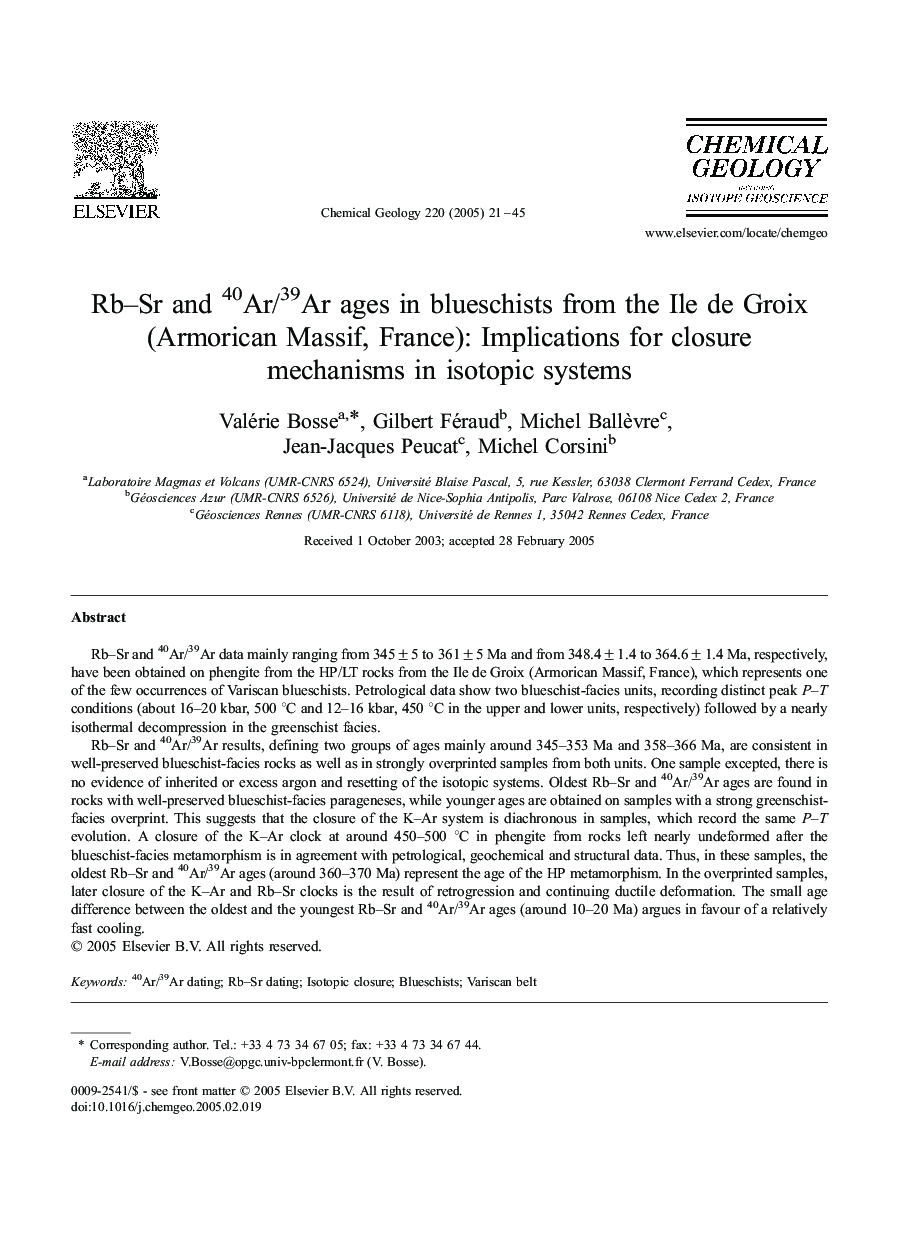| Article ID | Journal | Published Year | Pages | File Type |
|---|---|---|---|---|
| 9529005 | Chemical Geology | 2005 | 25 Pages |
Abstract
Rb-Sr and 40Ar/39Ar results, defining two groups of ages mainly around 345-353 Ma and 358-366 Ma, are consistent in well-preserved blueschist-facies rocks as well as in strongly overprinted samples from both units. One sample excepted, there is no evidence of inherited or excess argon and resetting of the isotopic systems. Oldest Rb-Sr and 40Ar/39Ar ages are found in rocks with well-preserved blueschist-facies parageneses, while younger ages are obtained on samples with a strong greenschist-facies overprint. This suggests that the closure of the K-Ar system is diachronous in samples, which record the same P-T evolution. A closure of the K-Ar clock at around 450-500 °C in phengite from rocks left nearly undeformed after the blueschist-facies metamorphism is in agreement with petrological, geochemical and structural data. Thus, in these samples, the oldest Rb-Sr and 40Ar/39Ar ages (around 360-370 Ma) represent the age of the HP metamorphism. In the overprinted samples, later closure of the K-Ar and Rb-Sr clocks is the result of retrogression and continuing ductile deformation. The small age difference between the oldest and the youngest Rb-Sr and 40Ar/39Ar ages (around 10-20 Ma) argues in favour of a relatively fast cooling.
Related Topics
Physical Sciences and Engineering
Earth and Planetary Sciences
Geochemistry and Petrology
Authors
Valérie Bosse, Gilbert Féraud, Michel Ballèvre, Jean-Jacques Peucat, Michel Corsini,
